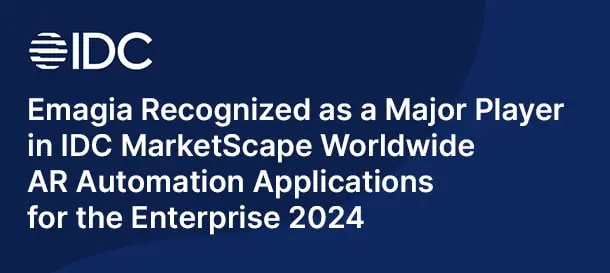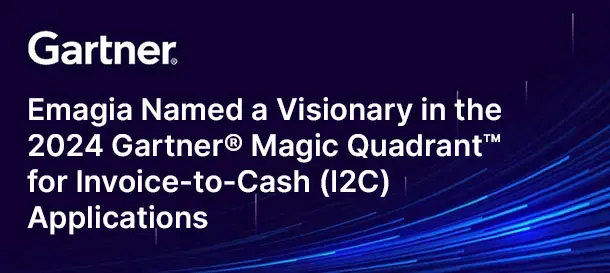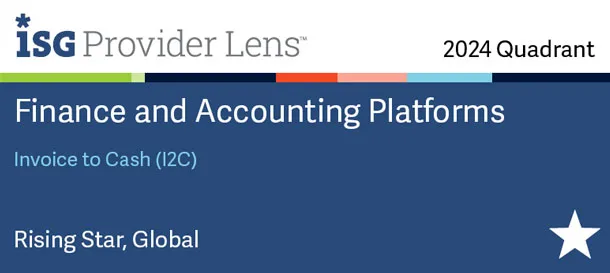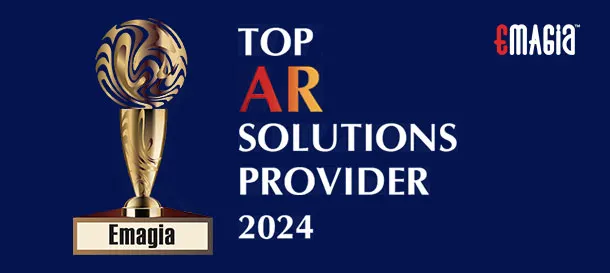In the world of business, cash flow is king. Yet, for countless businesses, the struggle of waiting for client payments is a constant source of stress and operational friction. A slow invoicing process can strangle even the most profitable companies, impacting everything from payroll to purchasing. This guide is designed to be your comprehensive playbook for transforming your accounts receivable into a streamlined, efficient machine. We’ll dive deep into the strategies, tools, and best practices that not only help you get paid faster but also enhance your relationships with customers and strengthen your overall financial health. From crafting the perfect invoice to leveraging cutting-edge automation, every section is crafted to give you actionable insights you can implement today.
The Foundation of Timely Payments: A Professional and Precise Invoice
The journey to getting paid faster begins not with a follow-up call, but with the invoice itself. A well-crafted, professional invoice is your first and most critical point of contact with the client’s finance department. It eliminates ambiguity, sets clear expectations, and drastically reduces the chances of payment disputes or delays. Think of it as a legal document, a professional communication tool, and a brand statement all rolled into one.
Essential Elements of a Flawless Invoice
Every invoice, regardless of your industry, must contain certain key pieces of information to be considered professional and complete. Missing even one of these elements can give a client a reason to delay payment.
Your Company’s Details: Always prominently display your full business name, address, phone number, and email address. Including your company logo adds a layer of professionalism and reinforces your brand identity.
Client’s Information: The invoice should be clearly addressed to the correct contact person or department at the client’s company. This is crucial for large organizations with complex accounts payable systems. Include their full company name, address, and contact person’s name to ensure the invoice reaches the right hands.
Unique Invoice Number: Each invoice must have a unique, sequential number. This is vital for your own accounting records, for the client’s record-keeping, and for easy reference during any communication. A consistent numbering system helps prevent duplicate payments and lost invoices.
Date of Issue and Due Date: Clearly state the date the invoice was created and the specific due date for payment. Do not use vague terms like “due upon receipt.” Instead, specify a term like “Net 30” (due 30 days from the invoice date) or “Due on [specific date]”. This eliminates all guesswork.
An Itemized List of Services or Goods: This is where you justify the total amount. Break down every service provided or product sold. Each line item should include a clear description, the quantity, the unit price, and the subtotal for that item. This transparency builds trust and prevents the client from having to ask for clarification, which is a common cause of payment delays.
Total Amount Due: The final, bolded total should be impossible to miss. It must include any applicable taxes, discounts, or fees, with a clear breakdown of each.
Payment Instructions: Provide clear and simple instructions on how the client can pay. This could include your bank account details for a wire transfer, a link to an online payment portal, or a mailing address for a physical check. Offering multiple payment options is a powerful way to accelerate the payment process.
Proactive Strategies for Expediting Payments
While a good invoice is essential, it’s only the beginning. The most successful businesses are proactive in their approach to accounts receivable, setting up a system that encourages and rewards timely payments before an invoice is even sent. These strategies are about managing expectations and making it easy for your clients to do the right thing.
Setting Crystal-Clear Payment Terms Upfront
The time to discuss payment terms is not when you send the invoice. It’s during the initial contract negotiation. By embedding a clear and concise payment policy into your service agreement or contract, you ensure that both parties are aligned from day one. This proactive communication prevents awkward conversations and sets a professional precedent.
Tip: Consider different terms for different clients. A long-standing, trustworthy client might have more flexible terms than a brand-new one.
Offer Multiple Payment Options and Digital Portals
Think about how you prefer to pay for things—often digitally, quickly, and with a few clicks. Your clients are no different. By offering a variety of payment options, you remove any friction from the payment process.
Providing an online payment portal where clients can pay via credit card, debit card, ACH transfer, or even PayPal gives them the flexibility and convenience they expect. This can be a game-changer, as it allows them to pay instantly, on their own schedule, without having to manually initiate a bank transfer or send a physical check.
Incentivizing Early Payments with Discounts
A small discount can be a powerful motivator. Consider offering a modest discount—for example, a 2% discount on the total amount if the invoice is paid within the first 10 days. This creates a compelling reason for clients to prioritize your payment over others. The small hit to your profit margin is often well worth the benefit of a significant improvement in your cash flow and reduction in your Days Sales Outstanding (DSO).
Requiring a Deposit or Retainer for Projects
For larger projects or new clients, asking for a deposit or retainer fee before starting work is a sound business practice. This not only provides you with working capital to cover initial project costs but also acts as a sign of the client’s commitment. A deposit can be structured as a percentage of the total project cost or a fixed fee.
The Power of Invoicing and Accounts Receivable Automation
For many businesses, the biggest obstacle to getting paid quickly is the sheer amount of manual, repetitive work involved in the accounts receivable process. This is where automation becomes your most valuable ally. Accounts receivable (AR) automation software transforms a slow, error-prone workflow into a fast, accurate, and low-touch system.
What AR Automation Tools Can Do for Your Business
Automated Invoice Creation and Delivery: Forget manually generating and emailing invoices. An AR automation system can be configured to automatically create and send invoices the moment a project milestone is met or a product is shipped. This instant delivery removes the delay between task completion and billing, and ensures the invoice reaches the client’s inbox immediately.
Intelligent Payment Reminders: Instead of manually tracking due dates and sending follow-up emails, automation software can do it for you. You can set up a series of polite, professional reminders to be sent automatically before an invoice is due, on the due date, and at set intervals after it becomes overdue. This consistent, timely communication is incredibly effective at encouraging prompt payment without requiring any manual effort from your team.
Simplified Cash Application: This is one of the most time-consuming parts of the AR process. Automation software, often powered by AI, can automatically match incoming payments to the correct open invoices, even without remittance advice. This process, known as cash application, becomes significantly faster and more accurate, freeing up your team to focus on resolving exceptions and disputes.
Real-Time Reporting and Dashboards: Manual processes make it difficult to get a clear, real-time view of your accounts receivable. Automation provides a centralized dashboard where you can see the status of every invoice at a glance. You can track key metrics like Days Sales Outstanding (DSO), monitor payment trends, and quickly identify which clients are consistently late. This data-driven approach allows you to make smarter decisions about your collections strategy.
A Proactive Collections System: The Art of the Follow-Up
Even with the best preparation, some invoices will inevitably go unpaid. This is where a systematic and professional follow-up strategy is critical. The goal is to collect the payment without damaging the customer relationship. This is a delicate balance of being polite yet firm.
Creating a Multi-Step Follow-Up Schedule
A structured, sequential follow-up plan ensures that no overdue invoice slips through the cracks.
Pre-Due Reminder (3-5 days before due date): Send a friendly email reminder. This is a simple courtesy that keeps the invoice top-of-mind and allows the client to address any potential issues before the due date.
Due Date Reminder (On the due date): A brief, professional email on the due date serves as a final, gentle nudge.
First Overdue Reminder (3-5 days after due date): This is your first official reminder that the invoice is past due. The tone should still be professional and friendly, giving the client the benefit of the doubt.
Second Overdue Reminder (10-14 days after due date): This reminder should be a little firmer. Reiterate the urgency of the payment and include a copy of the original invoice.
Final Notice (30 days after due date): At this point, the tone becomes more serious. This is a final demand for payment and should clearly state the potential consequences of non-payment, such as the application of late fees or the suspension of services.
How to Handle Consistently Late-Paying Clients
For clients who are habitually late, it may be time to re-evaluate the relationship. First, have a direct, non-confrontational conversation to understand the root cause of the delay. If the issue is with their internal processes, you may be able to help. If they simply prioritize other vendors, you need to be firm.
Consider these options:
- Adjust Payment Terms: For future work, require a larger deposit or switch them to shorter payment terms, such as Net 15 instead of Net 30.
- Withhold Services: For ongoing work, make it clear that no further services will be provided until the outstanding invoice is paid. This is a powerful motivator.
- Formal Demand Letter: If all else fails, a formal demand letter, often from a collections agency or lawyer, may be necessary.
Measuring Success: Understanding and Reducing Your DSO
How do you know if your efforts to get paid faster are working? By tracking your Days Sales Outstanding (DSO). DSO is a key performance indicator that measures the average number of days it takes for your company to collect payment after a sale has been made. A lower DSO means you’re collecting cash faster, which is a sign of a healthy and efficient accounts receivable process.
How to Calculate DSO
The formula for DSO is:
DSO = (Total Accounts Receivable / Total Credit Sales) x Number of Days
For example, if your total accounts receivable are $50,000, your total credit sales for the quarter are $150,000, and the quarter has 90 days, your DSO would be:
DSO = ($50,000 / $150,000) x 90 = 30 days
How to Improve Your DSO
Every strategy we’ve discussed so far is a direct way to reduce your DSO.
- Immediate Invoicing: Sending an invoice the moment a project is complete starts the payment clock ticking earlier.
- Automated Reminders: Consistent follow-ups prevent invoices from becoming forgotten, shortening the time to payment.
- Multiple Payment Options: Making it easy for clients to pay reduces friction and accelerates the transaction.
- Early Payment Incentives: Offering a discount directly motivates clients to pay before the due date, bringing down your average collection time.
A Strategic Edge: How Emagia Empowers Your Business to Get Paid Faster
To truly get ahead in the race for cash, manual processes are no longer enough. Businesses need a strategic partner that can automate, predict, and optimize their entire accounts receivable journey. Emagia is a perfect example of a solution built to address these modern challenges. It’s an AI-powered platform that moves beyond simple automation to provide an intelligent, end-to-end solution for your invoicing and collections process.
The platform uses artificial intelligence and machine learning to predict customer payment behaviors, giving you a powerful, data-driven advantage. Instead of a one-size-fits-all approach, Emagia allows you to segment your customers and apply tailored collections strategies. For your most trustworthy clients, the system might send a gentle reminder. For those with a history of late payments, the system can automatically escalate the follow-up process, ensuring a more assertive approach without manual intervention.
Furthermore, Emagia’s customer self-service portal is a game-changer. It provides your clients with a single, secure place to view all their open invoices, access payment history, and make payments instantly through various channels. This not only significantly reduces the time your team spends on answering billing inquiries but also improves the customer experience by providing a modern, convenient way to manage their accounts.
By automating cash application with high accuracy, Emagia reduces the need for manual reconciliation, which is often a major bottleneck. The system can pull in remittance data from multiple sources and automatically match payments to invoices, giving you a clear, real-time picture of your cash position. The robust reporting and analytics capabilities allow you to see exactly where your cash is tied up and how your collections efforts are performing. In essence, Emagia doesn’t just automate; it intelligently optimizes every step of the process to get you paid faster, more efficiently, and with greater visibility.
Frequently Asked Questions About Optimizing Your Invoicing Process
What is the difference between an invoice and a receipt?
An invoice is a request for payment, sent by a business to a client before the payment has been made. A receipt is a proof of payment, issued by the business to the client after the payment has been received.
How can I get invoices paid without being too pushy?
The key is a systematic, progressive approach. Start with polite, gentle reminders before the due date. As an invoice becomes more overdue, the tone can become firmer but should always remain professional. Automation tools can help you maintain this consistent schedule without the need for manual, potentially awkward, follow-ups.
Should I charge late fees on overdue invoices?
Yes, including a late fee policy in your payment terms can be an effective deterrent to late payments. However, it’s important to be transparent about this policy from the start and only enforce it after a clear series of reminders have been sent. The goal is to encourage timely payment, not to surprise a client with an extra charge.
How long should I wait before following up on an invoice?
It is a best practice to send a friendly reminder a few days before the due date. If no payment is received, your first official follow-up should be the day after the due date. From there, you can follow a schedule of reminders every 7-10 days, increasing the urgency of the communication with each follow-up.
What is the best way to send an invoice?
Today, the most efficient method is to send invoices electronically via email. Sending a PDF attachment is a professional standard. Many businesses are also adopting online portals that allow clients to view and pay invoices directly, which is the fastest and most convenient method for everyone involved.



